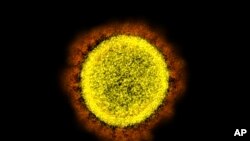In a joint statement along with the Food and Agriculture Organization and the World Organization for Animal Health, WHO said the COVID-19 pandemic is driven by human-to-human transmission, but the virus that causes COVID-19 is also known to infect animal species.
Along with domestic animals such as cats and dogs, WHO said free-ranging, captive or farmed wild animals such as big cats, minks, ferrets, North American white-tailed deer and great apes have thus far been observed to be infected with the virus.
The organization added that to date, farmed mink and pet hamsters have been shown to be capable of infecting humans with the SARS-CoV-2 virus. A potential case of transmission between white-tailed deer and a human is currently under review.
But the agencies are most concerned about the introduction of the virus to wildlife, which could result in the establishment of animal “reservoirs” — large groups of animals with the virus.
As an example, WHO cites reports that approximately one-third of wild white-tailed deer in the United States have been infected with the virus that causes COVID-19 initially via several human-to-deer transmission events.
The strains of the virus detected in white-tailed deer have also been circulating in nearby human populations. white-tailed deer have been shown to shed the virus and transmit it between each other.
All three agencies are urging all countries to take steps to reduce the risk of virus transmission between humans and wildlife with the aim of reducing the risk of more variants emerging, and for protecting both humans and wildlife.
They are calling on authorities to adopt relevant regulations and disseminate previously released recommendations for people working in close contact with or handling wildlife, including hunters, butchers and the public.
WHO, other UN agencies, Monitoring Animal Transmission of COVID-19
- By VOA News

The World Health Organization, along with two other United Nations agencies, said Monday they are monitoring the transmission of COVID-19 among animal populations for fear it could facilitate the emergence of new variants.






